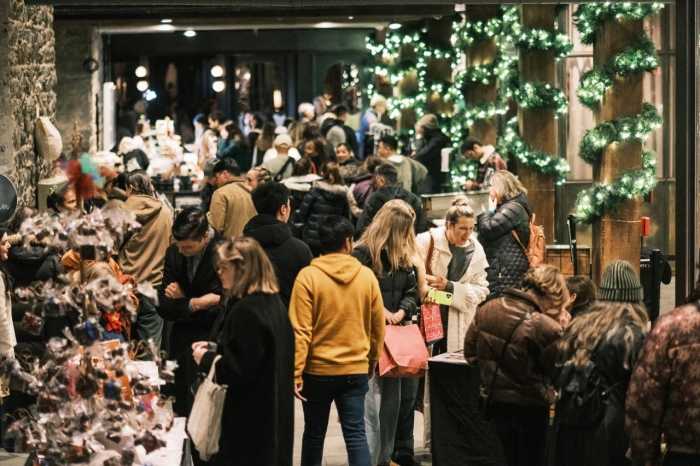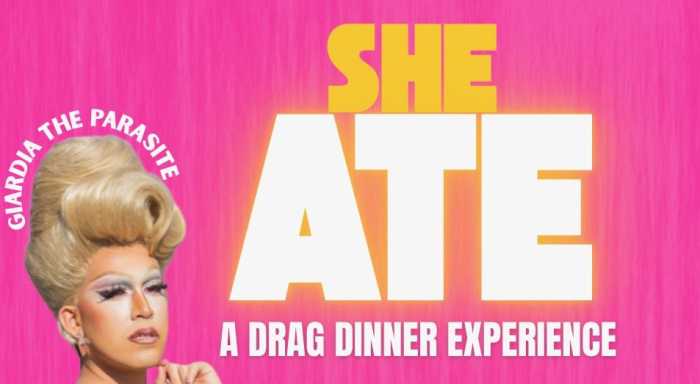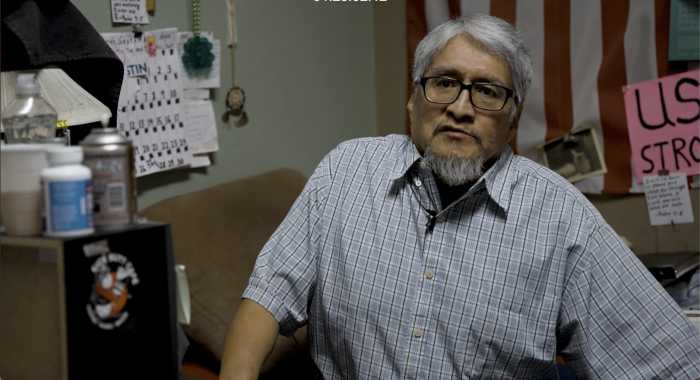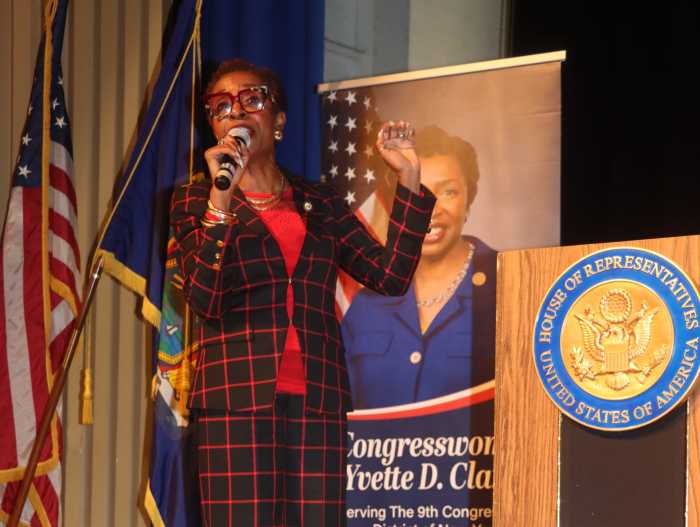Last year, a divergent group of art scholars,
constitutional lawyers and cultural critics met in Chicago for
a nine-hour arts symposium with the charged title: "Taking
Funds, Giving Offense, Making Money."
The audience of nearly 400 argued over the latest event in America’s
cultural wars – the fight between the Brooklyn Museum of Art
and Mayor Rudolph Giuliani over "Sensation: Young British
Artists from the Saatchi Collection" (Oct. 2, 1999 to Jan.
9, 2000).
They must have gained some perspective in Chicago, far from the
hype and hysteria in New York, because the book that resulted
from the symposium presentations – "Unsettling Sensation:
Arts-Policy Lessons from the Brooklyn Museum of Art Controversy"
(Rutgers University Press, $25) – finally provides a nuanced
account of what happened during the tug-of-war over artist Chris
Ofili’s painting, "The Holy Virgin Mary," in Brooklyn
in the fall of 1999.
The 21 essays in "Unsettling Sensation" respond to
the controversy along a number of sightlines including the law,
the public’s relationship to museums, offensive images, government
funding and the press.
The "Sensation" exhibit was supposed to bring a young,
hip audience that cared about art but knew next to nothing about
the art museum in Brooklyn, according to the book.
It worked.
The 9,000 visitors who attended opening day, some waiting as
long as 90 minutes for one of the $9.75 tickets, doubled the
museum’s previous one-day record for "Monet and the Mediterranean"
set on Jan. 3, 1998. Brooklyn Museum of Art director Arnold Lehman,
in fact, had already doubled the museum’s annual attendance from
250,000 in 1996 to 470,000 in 1999.
But even as "Sensation" brought a new audience to the
Brooklyn Museum, it raised questions about the government’s right
(or lack thereof) to determine the content of the cultural institutions
it funds and the future of museums’ relationships with their
donors and audiences.
Legal battle
The First Amendment question, as demonstrated by five of the
essays in "Unsettling Sensation," is still far from
settled. The mayor withheld the Brooklyn Museum’s funding because
he objected to Chris Ofili’s painting (see photo at left). Giuliani
then tried to evict the museum; the museum sued the mayor on
First Amendment grounds and won before federal Judge Nina Gershon.
According to the law professors writing in "Unsettling Sensation,"
the case was not the black-and-white issue it was popularly believed
to be.
At the time, the city provided about $7 million of the museum’s
annual $23 million budget. Those numbers roughly hold today.
In his essay "The False Promise of the First Amendment,"
University of Chicago law professor David Strauss theorizes that
it may have been a Pyrrhic victory. If enough judges take the
same road as Gershon and come down emphatically on the side of
public art institutions against their government benefactors,
"governments would begin to ask themselves exactly what
they are getting themselves in for if they fund this exhibit,
this group of performers, or these artists." After all,
government is not constitutionally required to fund the arts.
Strauss’ underlying argument, which he shares with Stephen Presser,
a professor of legal history at Northwestern Law School, is that
the museum’s victory was far from assured. If it plays its cards
right, the government does not have to fund offensive material.
Presser writes that Giuliani should have been able to sever the
city’s partnership with the museum on the grounds that the museum
violated that partnership. The city, represented by corporation
counsel Michael Hess, raised this issue to no avail.
The mayor assured his own defeat by attacking the museum too
strongly. Had he tried to use a more delicate method of withholding
funds he might have had a legal leg upon which to stand.
Then again, Giuliani appeared less worried about removing Ofili’s
painting from the exhibition than making political points with
upstate Conservatives (to shore up his campaign for a Senate
seat) writes David Ross, director of the San Francisco Museum
of Art. If Giuliani’s role as the strident moral opponent was
"scripted," so was that of Lehman, as the promoter
of the show.
Being ’hip’
Narrowed to its component parts, Ofili’s "The Holy Virgin
Mary" is paper collage, oil paint, glitter, polyester resin,
map pins and elephant dung on linen. In a broader context it
was part of a provocative appeal to younger audiences. When the
museum began to print tongue-in-cheek advertisements warning
that the exhibit might induce nausea or vomiting the point was
clear: This is not your parent’s Brooklyn Museum of Art.
"We have a vast community of people for whom we’re not relevant,"
Lehman said in an interview last year. "We have to figure
out how we can become increasingly significant in people’s lives.
We can’t do it by insisting that they learn about Renaissance
art."
His words just as easily apply to the Brooklyn Museum’s subsequent
exhibit, "Hip-Hop: Roots, Rhymes and Rage" (Sept. 22
to Dec. 31, 2000), an attempt to attract younger black and Hispanic
audiences and any youth who like hip-hop music and culture. The
words also apply to the upcoming "Star Wars: The Magic of
Myth" exhibit (opening April 5, 2002) and to any of the
record-breaking exhibits at Manhattan’s Guggenheim Museum, like
"Armani" (Oct. 20, 1999-January 17, 2000) or "Art
of the Motorcycle" (June 26, 1998-Sept. 20, 1998) that,
at least on the surface, appear more market driven than educational.
Such exhibits, it can be argued, seek to broaden and democratize
a museum’s audience. At the same time, the broader demographics
make the museum more appealing to corporate donors. There is
no reason why a museum can’t satisfy its personal needs while
meeting the public’s.
"Our audience today reflects in part a responsiveness to
that exhibition [Sensation] in terms of the museum having a younger,
somewhat diverse and increasingly committed audience," Lehman
told GO Brooklyn.
Dwindling funds
The needs of these institutions have grown, however. Corporate
and government funding for public museums has dropped dramatically
in recent years. In the year "Sensation" opened, the
Alliance for the Arts, which tracks New York City’s arts organizations,
released a report on funding for non-profit arts organizations.
In New York City, federal arts funding nose-dived by 88 percent
to cover just 1.2 percent of arts organizations’ budgets, according
to the report. In that same period New York City cut funding
to non-profit cultural institutions by half. Corporate funding
dropped in those years from 5.6 to 3.9 percent of the New York
arts organizations’ budgets.
No surprise then that some museum directors were running scared.
"The ’greater’ scandal of the ’Sensation’ show was that
it revealed (oh marvelous revelation!) that art museums are in
competition with movies, shopping malls and theme parks,"
writes W.J.T. Mitchell, an art history professor at the University
of Chicago, in "Unsettling Sensation."
"Sensation" was funded, in part, with $160,000 from
Charles Saatchi, $50,000 from Christie’s and $75,000 from David
Bowie. It was a four-way relationship. Christie’s stood to gain
from any potential future sale of the art work; Bowie, who recorded
the audio tour that accompanied the exhibit, was given the rights
to use the art on his Web site; and Saatchi, well, Saatchi owned
the art, and had a reputation of buying large quantities of contemporary
art, aggressively promoting it, then turning around to sell it
at a profit.
Mitchell suggests that Brooklyn was only guilty of indiscretion
by hiding Saatchi’s donation, yet museums have long kept their
internal operations cloaked because they are not as pretty as
the objects inside. Artist Hans Haacke managed to offend the
Guggenheim when he attempted to exhibit photos of tenement buildings
owned by the museum’s trustees, Mitchell points out in "Unsettling
Sensation." The incident took place in 1971, and the exhibition
was cancelled six weeks before its scheduled opening. The Guggenheim
fired the show’s curator.
Lehman has said he "begged" Saatchi to fund the exhibit
after corporate sponsors refused to back it and that the secrecy
was due to Saatchi’s desire to remain anonymous.
"To me that means if a reporter asks me about it I’m going
to say ’no,’" Lehman said.
"I tried to convince [Saatchi] to help," Lehman told
GO Brooklyn. "It was never a question of funding the exhibition.
What he did was only a fraction [of the exhibition’s costs]."
The consensus on the Brooklyn Museum’s actions is described in
"Unsettling Sensation" by James Cuno, director of the
Harvard Art Museums, who writes: "In pursuing this exhibition
and its funding as it did, the Brooklyn Museum took chances not
many museum directors would take." Cuno acknowledges that
Harvard has in the past taken donations from the owners of its
exhibits.
The stamp of disapproval came when the American Association of
Museums, which has more than 3,000 institution members, passed
a new set of ethical guidelines the summer after "Sensation"
closed.
Hype vs. reality
Even if the Brooklyn Museum went too far, there was something
off in the media’s revelations of the museum’s funding practices,
writes Andres Szanto, a deputy director of the National Arts
Journalism Program at Columbia University. The press is ill equipped
to handle the juncture of arts and hard news, he writes. The
arts are "feature" section material, more emotional
in response and often less rigorous in its reporting than the
"news" sections, he claims.
For example, writers kept describing Ofili’s painting as "smeared"
with dung, when in fact the dry, lacquered balls of dung were
carefully placed and anything but smeared. A small point perhaps,
but telling in the lack of reporting and the attempt to stir
emotions.
When it came to the largely unknown world of financial relationships
between museums and exhibitions, press reactions went both ways.
Either it was standard practice for a museum to take money from
the owner of an exhibition or it was scandalous. Museum directors
around the country did not help by sending mixed messages, Szanto
writes.
UCLA’s LeRoy Nieman Center for the Study of American Society
bases an interesting essay in the book on UCLA’s survey of 860
visitors to the "Sensation" exhibit.
Forget Chris Ofili, the survey revealed that it was the Chapman
brothers, Jake and Dinos, who most offended museum visitors with
their sexualized metamorphic teenage mannequins.
The disconnect between the reality of viewer response and the
hype shouldn’t surprise – considering that neither the mayor
nor Lehman had seen "Sensation" firsthand before they
made their judgements of it.
"Unsettling Sensation: Arts-Policy
Lessons from the Brooklyn Museum of Art Controversy," edited
by Lawrence Rothfield (Rutgers University Press, $25) can be
ordered at A Novel Idea Book Store [8415 Third Ave. (718) 833-5115]
in Bay Ridge, Community Bookstore [143 Seventh Ave. between Carroll
Street and Garfield Place, (718) 783-3075] in Park Slope and
BookCourt [163 Court St., (718) 875-3677] in Cobble Hill.

























